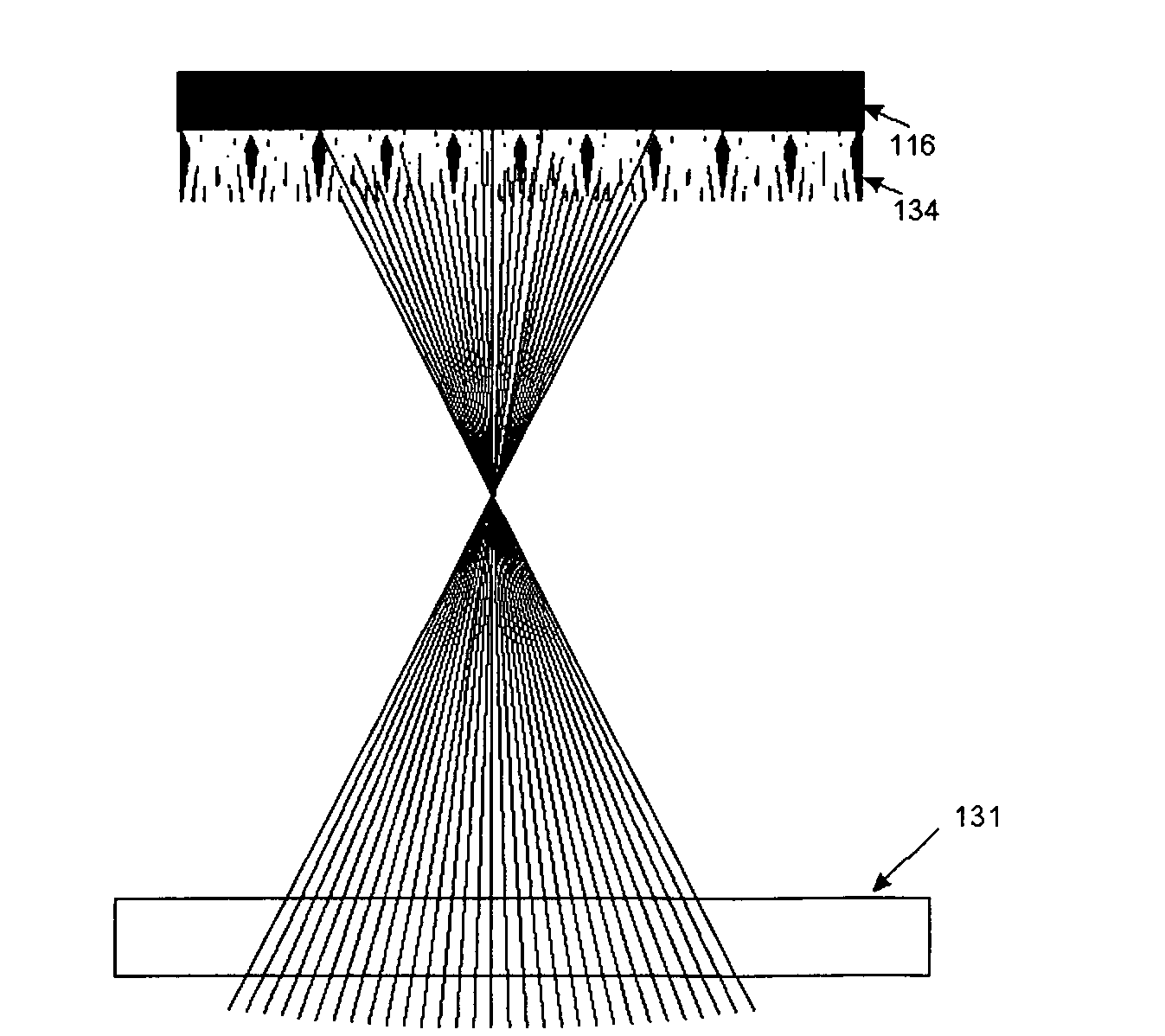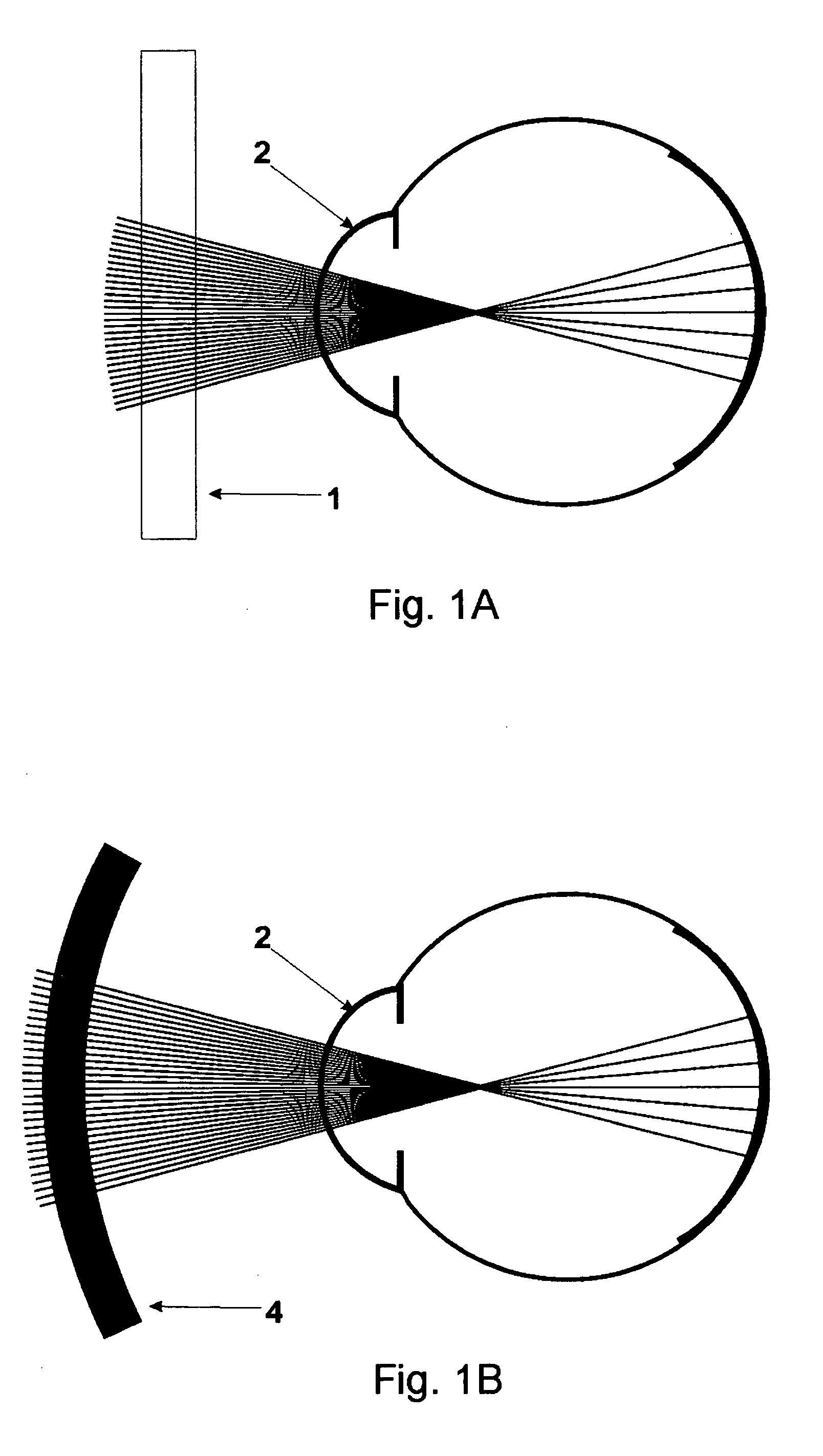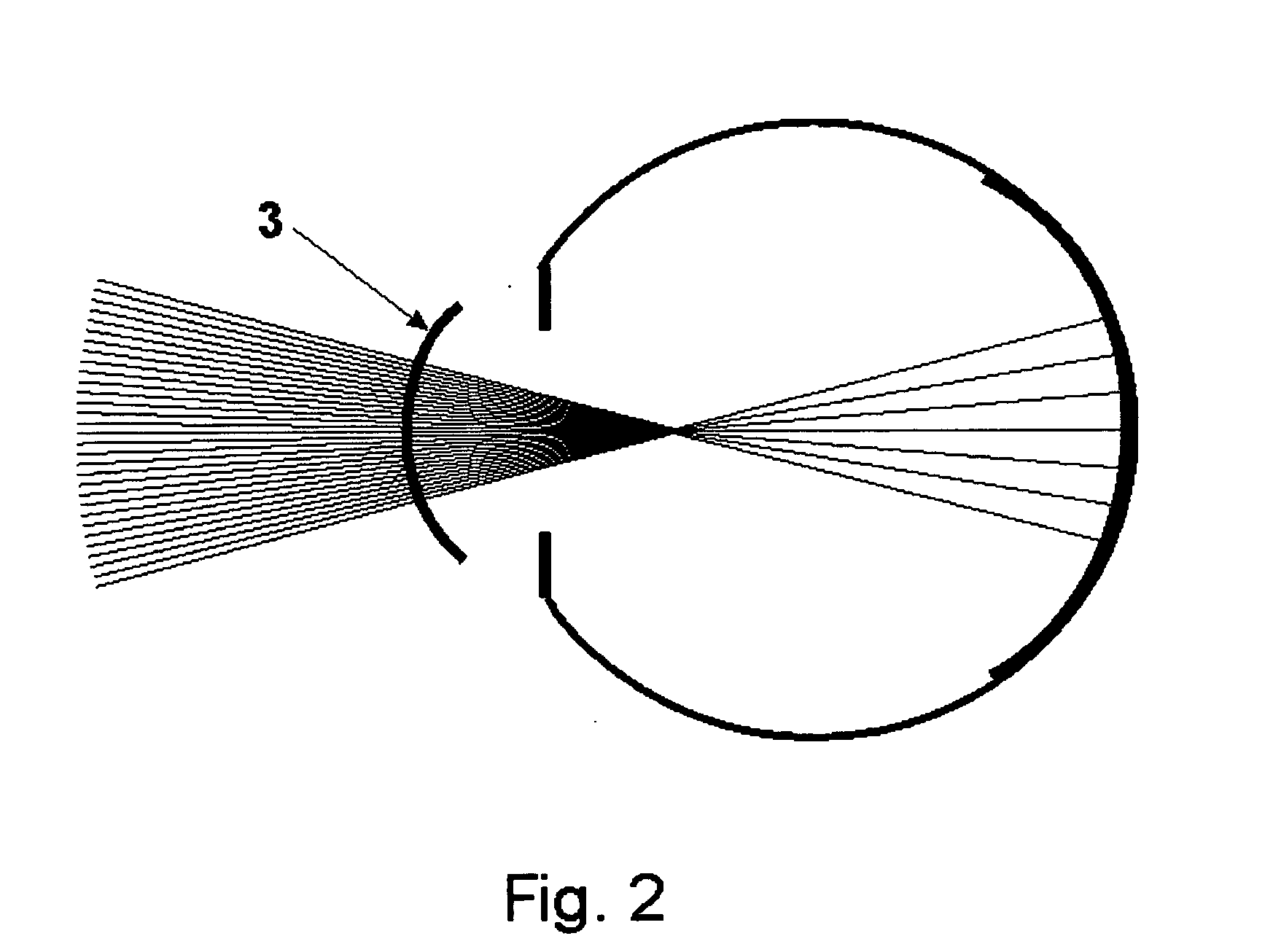Specially coherent optics
a optical field technology, applied in the field of special type of optics, can solve the problems of limiting the ultimate resolution and purity of the image, no optics are perfectly uniform, and the transmission-medium lens is too small, so as to achieve the effect of reducing cost and high precision
- Summary
- Abstract
- Description
- Claims
- Application Information
AI Technical Summary
Benefits of technology
Problems solved by technology
Method used
Image
Examples
Embodiment Construction
[0040] The use of Channel Mapped Optics (CMO), controls and conditions light in a non-refractive manner to achieve visual effects not practical with refractive or reflective optics.
[0041] Aperture Array Alignment with the Eye's Effective Center of Rotation:
[0042] As an example, a worn replacement for glasses superior to the Stenopeic method is first described.
[0043] The array and path of the apertures through the medium are aligned and pointed with respect to the vision-effective rotational axis of the eye so that as the wearer moves his eyes, the apertures continue to be essentially aligned with the optical axis to provide a clear, non-blocked image. This provides a brighter image with the light largely normal to the surface of the cornea (for maximum transmission) and a vastly broader image (full peripheral vision),
[0044] Ex. A: The glasses lens-replacing medium itself, can be curved along a semi-sphere whose approximate center (were it a full sphere) is at or near the rotatio...
PUM
 Login to View More
Login to View More Abstract
Description
Claims
Application Information
 Login to View More
Login to View More - R&D
- Intellectual Property
- Life Sciences
- Materials
- Tech Scout
- Unparalleled Data Quality
- Higher Quality Content
- 60% Fewer Hallucinations
Browse by: Latest US Patents, China's latest patents, Technical Efficacy Thesaurus, Application Domain, Technology Topic, Popular Technical Reports.
© 2025 PatSnap. All rights reserved.Legal|Privacy policy|Modern Slavery Act Transparency Statement|Sitemap|About US| Contact US: help@patsnap.com



